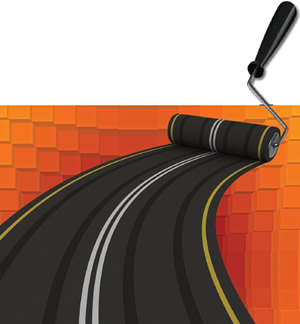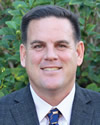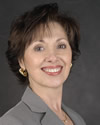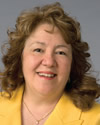Business Solutions
Paving HME's Path
The future of the home medical equipment industry will be what providers make of it.
- By David Kopf
- Oct 01, 2016
 Sometimes, the future depends on your perspective. Every year
HME Business takes time to sit down with its Editorial Advisory Board and
asks the experts sitting on it (a list of the full board is available on page 6)
what key trends, obstacles, challenges and opportunities they think providers
will face in the coming year. And every year those experts have shared expert
advice on some very important industry developments that truly impacted
providers’ business strategies.
Sometimes, the future depends on your perspective. Every year
HME Business takes time to sit down with its Editorial Advisory Board and
asks the experts sitting on it (a list of the full board is available on page 6)
what key trends, obstacles, challenges and opportunities they think providers
will face in the coming year. And every year those experts have shared expert
advice on some very important industry developments that truly impacted
providers’ business strategies.
But this year is different. Certainly, many of our EAB members address
pertinent and high-priority business issues providers must address right
now. But in this edition of our EAB roundtable, many of our experts are also
looking at the coming year and seeing an opportunity for providers to shape
their industry’s future, to lay entirely new roads that their businesses can
follow. And what they are saying makes a lot of sense.
While the industry faces many obstacles — bidding, audits, tough rental
markets — many EAB members are also starting to identify stepping stones
that can help HME providers pave a path to a new kind of business model.
Creating Value-Based
Purchasing Arrangements
With Payers
 Tom Ryan, President and CEO
of the American Association for
Homecare
Tom Ryan, President and CEO
of the American Association for
Homecare
While fighting the industry’s legislative battles remains a top
priority for AAHomecare’s Ryan, he has also been working to develop new business
models for HME providers. For instance, at press time, Ryan was preparing
to travel to Chicago for a meeting with the American Association for Respiratory
Care to help identify viable new respiratory care business models. The aim would
be to develop a model that is an alternative to Medicare that would appeal to
private payers as a business opportunity. The industry and providers need to
be able to demonstrate the need for their services, the value of the market,
and outline profitable business models for both providers and payers in terms
of sustainable cost structures, while also delivering solid patient outcomes.
Moreover, Ryan says the model could be demonstrated to the Medicare and
Medicaid Innovation Center. This is an initiative any provider can undertake.
“Some providers are doing this already” he notes. “There has to be a drive
to change reimbursement. We all know that homecare is patient preferred;
we know it’s more economical. Yet, our niche industry, which is an important
component for these patients with chronic diseases, continues to get
commoditized.
“We have to somehow come up with an alternative. Maybe there are people
out there with ideas that they can share with the [DME] community, and we’ll
certainly be coming out of this Chicago meeting with a potential model for
working with insurers.
“If you can go to the payer, and you can show patient satisfaction, good clinical
outcomes, and you can save dollars over the continuum of care, there could
be interest. You have to convince that payer that it can’t pay $42 for an oxygen
concentrator in the state of Washington. You need to have some kind of value
for the service, and that if you can get paid for preventing a 30-day readmission
where the hospital would be getting dinged, but you as a provider get an incentive
for preventing that 30-day readmission there is a reward system there.
“As we’re racing to the bottom and we’re seeing the reimbursement from
other payers beginning to fall, I believe the wise provider is going to be three
steps ahead. So, continue to have dialog with other payers about where you think
you can win on the service end. If you can win on the service end and provide
good clinical outcomes that payer has to realize there has to be reward for that,
because you just can’t continue to pay for the HCPCS code as a commodity.”
Incremental Sales
 Rob Baumhover, Director of Retail
Services for VGM Retail Services
Rob Baumhover, Director of Retail
Services for VGM Retail Services
Retail sales is clearly a key opportunity for
HME providers for providers looking to expand their
businesses, but it’s also a way for HME providers that are
still largely funded to make up for the losses they incur
due to bidding and other reimbursement cuts. In other words, retail is going
industry-wide, and it’s all do to a technique called incremental sales, according
to Baumhover.
“What we’re finding is that our members and providers in general are looking
for ways to make up for funding losses,” he says. “Let’s take a CPAP device; the
E0601. Given the reimbursement reduction for that, if you provide CPAPs, what’s
a way for making up that reduction?
“What we call it is incremental sales — making sure you [the patient] have a
CPAP pillow; that you have CPAP wipes; those add-on products. For folks that don’t
want to get ‘all in’ on retail, this is a way of getting ‘all in.’ They’re building a retail
play around what their strengths are.
“So we’re currently building some incremental sales pieces that outline what
the category or procedure code is, and then around that we’ve identified eight
add-on or incremental sales items that someone can take a look at and say,
‘These are some good items that I can carry in my store, so if I sell one or two
of these every time someone comes in it will help make up for the loss that I’m
taking across the board.’”
“A pretty large percentage of providers are still not in retail and still very
dependent on reimbursement. So we look at this as a way for those folks to dip
their toe in. But it [incremental sales] is not taking a guess at retail. It’s some
planning and some results on the back end that we’ve seen over the past couple
of years, in terms of the products that are having some success.”
An Oxygen Stalemate
 John C Eberhart RRT-SDS, RPSGT,
President of Eberhart Home
Health Inc. and Western Regional
Clinical Sales Representative for
International Biophysics Corp.
John C Eberhart RRT-SDS, RPSGT,
President of Eberhart Home
Health Inc. and Western Regional
Clinical Sales Representative for
International Biophysics Corp.
A longtime provider, as well as a representative of a
manufacturer, Eberhart says he’s witnessing a disturbing trend among small and
medium respiratory providers: they’re not taking on new patients. The reimbursement
environment for those products and services is simply becoming too
hostile to justify the investment, he says. They’ve simply been priced out of the
ability to provide care, and for such a “meat and potatoes” kind of HME product
and service, that’s not only a concern, but a strong indication of how and why
the industry is changing.
“I’m seeing people not taking on new oxygen patients, because reimbursement
is so low,” he says. “Healthcare providers are taking some previously unheard of
steps that I’ve never seen before in order to cut their costs.
“So if a physician isn’t going to follow his own CPAP patient, why would a DME
company give an oxygen patient 10 tanks a week, or 40 tanks a month, at $3 a pop
for a reimbursement of $70 a month or less? That’s the one thing I’ve been seeing
with the small- to mid-sized providers that are left.
“And they’re picking up items, such as the Afflovest, that are not covered by
competitive bid and for which reimbursement is still good. Maybe doing more
Trilogy because even though the reimbursement got cut it’s still pretty good.
They’re looking for different options out of necessity.
“In a way it’s kind of sad, because the reason everybody got in this business
is to take care of patients and their community, and people aren’t doing that
as much now. There are a couple nationals that seem to do a pretty good job
providing portable oxygen concentrators to limit their deliveries, and that’s the
model I see more now than any tanks.
“Nobody really focuses on the 26.2 percent readmission rate that has been
that way forever. So whether it’s high-frequency chest wall oscillation, or
something else, what is going to save the healthcare system money is keeping
patients at home.”
Protecting the CRT Benefit
and CRT Patients
 Georgie Blackburn, Vice President
of Government Relations
and Legislative Affairs for
BLACKBURN’S
Georgie Blackburn, Vice President
of Government Relations
and Legislative Affairs for
BLACKBURN’S
Of course the industry’s legislative fights remain pertinent here-andnow
issues that advocates and providers must address. For mobility providers,
the central issue is protecting complex rehab, both in terms of the chairs and
the accessories. For such an incredibly vulnerable segment of patients, the
slight cut to reimbursement can be calamitous for them if it means they can’t
get access to the supplies they need. So, as the year winds down, providers
must work double-time to see that Congress passes H.R.3229 in the House and
its Senate companion S.2196 this year, Blackburn explains.
“It’s paramount that, for providers that work with the rehab community, to
make certain that we get complex rehab accessories paid at the CRT level and
not at the level of competitive bidding. I think it’s paramount that before the
end of the year if at all possible we have to get that done,” Blackburn says.
“Beyond that, I believe the separate benefit has to be secured for the population
that needs those products.
“In the back of everything we do our rehab population clients are very important
to us because we realize that we really have to have Congress educated on
their needs before we can provide the items they need.
“My hope is that we wouldn’t have to push through legislation; that logic would
prevail. And this is one thing where we do have MIPPA 2008 [which was intended
to carve out CRT from bidding] on our side, and we do have a lot of logical facts
on our side, and if we are eloquent enough to convey them adequately enough
then we can get the job done.
“My gut feeling is that we’re going to get it done. I know that my representatives
understand it, and since our original champions signed onto this endeavor
that a lot of my colleagues have educated their representatives, so we have a
considerable push going, and I have faith this will get done.”
Prioritizing Professionalism
and Service in the Face of
Adversity
 Steve Ackerman, President of
Spectrum Medical
Steve Ackerman, President of
Spectrum Medical
Whether they have competitive bidding contracts, or are trying to
reshape their revenues because they didn’t get contracts, there are many providers that are upset about the state of the DMEPOS benefit. The problem
that Ackerman sees is that too often that anger and frustration — while understandable
— is being shared with customers and referral partners. While it’s
important that partners and patients are aware of the issue, providers could
poison their own future wellbeing if they don’t start handling those interactions
with more nuance. This is especially true as the industry shifts to other funding
sources.
“What I saw happening in my office that I wanted to quickly put an end to was
that there’s a general feeling of being discontent all the way up to feeling really
mad about what’s going on in the industry. It starts at the top and trickles down
through the organization.
“I found that dealing with my frustration about competitive bidding, and our
case there were not enough bids awarded in the area so our phone volume
quadrupled, and we’ve become a resource center for all sorts of questions, which
just cuts into our business.
“Behind the doors of every shop are legitimately angry people because their
lives have been upended one way or another, whether you’re a bid winner or
not. All of that is extremely difficult on employees.
“So the thing that people tend to forget is that people calling into your office
and referral sources don’t know about all this. They don’t know why you’re
cranky on the phone; and they don’t know why you’re not returning phone calls
promptly; and they don’t know why when you used to be able to get out in 24
hours you now can’t get out in 36-plus hours.
“The tendency to share your problems with people who really don’t understand
the backstory of what’s going on in the industry can really cloud the
perception of your company on the part of new and very valuable customers.
“So we’ve been doing a lot of coaching with our folks, including a lot of our
senior staff, about the importance of keeping this frustration within the confines
of the executive offices; to be clear about what the vision is going forward; and
definitely not be in a situation where you’re sharing your frustrations with the
average person calling in just wanting to do business with you.
“You want to be succinct, and you want to be clear about what the problems
are, and if you’re not going to be able to do something the way you used to, you
need to be able to explain it clearly to the referral sources. At the same time you
have to provide shockingly good customer service on top of it.
“The reality that we all have to understand is that the whole industry is going
to be moving to more of a cash base for our services, because the Medicare
program simply can’t sustain the number of people in the Baby Boom generation
moving into it. So for 20 years we are going to see a slow erosion of
Medicare activity and benefits that is going to be replaced by cash. Whatever
model you’re going to end up with, customers are going to want to deal with
friendly, knowledgeable staff, and they appreciate good service.”
Employee Training
 Sandra Canally, President of The
Compliance Team Inc.
Sandra Canally, President of The
Compliance Team Inc.
Whether times are bad, or good, one of the
most strategic assets a provider has is a highly training
employee. And, now that everyone’s kids have returned
to school, it’s an excellent time for providers to think about training their
employees, as well, Canally argues. The more knowledge team members have,
the more they can help the organization flexibly respond to a changing industry.
“This is the perfect time to look at how you are training your employees,” she
says. “There are many things that need annual training and the documentation
of that, such as OSHA. For example, if what you do exposes your employees
to blood-borne pathogens, then this is agood time to get your employees
OSHA training on blood-borne pathogens. Or, if you’re in an area that has been profiled as problematic or high risk for TB. Or, for your corporate compliance,
are all your employees up to date on your standards for conduct? Also, HIPPA
requires annual training.
“Even when times are tough, the best way to reduce your risk within the organization
is to have highly trained employees. It’s going to reduce your risk. A lot
of people are diversifying because of competitive bidding, so now is the perfect
time to make sure all of the folks involved in the setup of those new products are
highly trained.
“We’re talking about training from within in, internally. We’re trying to keep
costs down. The owners have control about who’s going to get trained within
their organization and when. And if you need some external training — say you
have a new chair from Pride, you can get the Pride rep in.
“Every accreditor is going to look at how a provider trained, when they
trained, and is their training up to date. So now is the time to start that.”
Facilities-Based Care
 Ron Resnick, President of Blue Chip
Medical Products Inc.
Ron Resnick, President of Blue Chip
Medical Products Inc.
Now is the time for providers to get
creative about new market development. That might
be a tough pill to swallow for a provider that has been
in business for 25 years with many tight referral partner
relationships, but the name of the game is getting new clients, and Resnick says
a great place to start is with facilities-based care.
“Maybe now you call on the veterans’ hospitals,” he says. “A lot of hospitals
buy product and then redistribute it; mostly in sub-acute facilities and long-term
care facilities. There are other avenues in which to become successful, but you
have to take a start. You have to get out of your building. A lot of the homecare
providers are stuck in their buildings waiting for the patients to come to them.
“Let’s say, as an example, that you have a retail store. Do you know how many
nursing homes there are where they have a recreational therapist who is looking
for some kind of activity for the residents? The provider can invite people into
their store and then hire a diabetes expert to talk about what they can eat, or
something relevant to that age group.
“They can bus them in, get two or three vendors to come in there, have a little
nosh with some coffee and tea, and then one of the residents says, ‘Oh that
looks nice. What is that?’ The provider can say, ‘Oh that’s a lift chair. Would you
like to sit in it?’ There are a lot of facilities that have vans that will take patients
on a little field trip that is 10 minutes away from their facility as long as there is
some educational value.”
Increased Mobility and
Accessibility Consolidation
 Drew McCartney, President and
CEO of Harmar
Drew McCartney, President and
CEO of Harmar
For providers working in the mobility and
accessibility spaces, there is a good chance that they
will see increased consolidation in their marketplace, and they must take care in
terms of how they are going to pursue that. Those providers must also grasp the
market forces driving this consolidation, and how the landscape could change
as things play out, according to McCartney.
“Whether it’s the big alpha dog, MobilityWorks out of Ohio, followed by
United Access, and then Ability Center, there is absolutely consolidation on the
mobility side,” he says. “And it’s more due to auto adaptive equipment, than I think it is fueled by where I participate in the market, which is vehicle lifts. But
I’ve always been puzzled why we haven’t been seeing it on the home access
side. I think we’re now seeing that.
“The mobility market has consolidated from a provider standpoint, whereas
access is still a lot of moms and pops. We saw National Seating and Motion buy
Hudson; a pretty overt play into the access side of the business from a group
that recognizes complex rehab is going to continue to get tightened down by
the Feds, so they need to have some other shots on goal. We have a group
Lifeway Medical, which is operating now in Minnesota and Connecticut, and
that’s some former DTG Rehab guys.
“To my view this is only going to get more intense, because everyone is going
to look to distribution, because the last five yards to the customer’s checkbook
are so critical in the sense that you need to have the ability to get your product
to the consumer, but also get your product installed. There are a couple of
independent install networks in the market, and I think some of those install
networks are going to start getting M&A there. There’s an appeal of having an
‘agnostic’ install. I’ve seen it in a couple places.”
DME’s ‘Pain at the Pump’
 Jeffrey S. Baird, Esq., Chairman of he Health Care
Group of Brown & Fortunato, P.C.
Jeffrey S. Baird, Esq., Chairman of he Health Care
Group of Brown & Fortunato, P.C.
As we all know, competitive bidding is creating a massive
change within the industry, but the scale and the scope
of that change might be larger than many industry participants’
estimation, according to Baird. With the competitive
bid rates being extended nationwide, it is very
difficult for providers to take assignment, and some are
finally saying they simply can’t serve Medicare patients.
That has bigger implications than we might realize.
“I call this ‘pain at the gas pump,’” Baird says. “Up
to this point, DME companies have run interference for
their patients; they have shielded their patients from pain. And there have been
few patient complaints about accessibility, because DME companies have taken
all the arrows for their patients.
“All that is changing now. The DME companies have been backing up, and
backing up, and backing up to shield their patients, but now the DME companies
are at the edge of the cliff and they can’t back up any more. So ‘pain at the
gas pump means’ that when there’s a hiccup in the Middle East, everyone feels
it at the gas pump.
“Here [in the HME industry] pain at the gas pump means that DME companies
need to bring their patients in as part of the solution. And that’s a nice way of
saying that DME companies need to spread some of the pain to their patients.
They have no choice.
“So what’s happening is we’re seeing a sea change where more and more
DME companies are choosing to be non-participating, meaning they don’t have
to take Medicare assignment (except for certain circumstances), and these nonparticipating
DME companies are saying to their patients, ‘You have to pay me cash right now. We’ll submit a claim on behalf of Medicare to reimburse you, but
we get our cash up front.’ There are certain circumstances where they have to …
but other than limited circumstances, DME companies can say to their patients,
‘We can afford to take assignment.’
“That is the sea change were beginning to see. We’re not sure how Medicare
is going to react, but this is way to bring the patients into the problem and make
the patients be part of the solution.
“And one other thing to take into consideration: When a non-participating
provider does bill non-assigned, then the DME company can charge more than
the reimbursement, and can within certain limitations can charge less.”
Reshaping Business Models
 Joe Lewarski, Vice President of
Global Respiratory and Sleep for
Drive DeVilbiss Healthcare
Joe Lewarski, Vice President of
Global Respiratory and Sleep for
Drive DeVilbiss Healthcare
Ultimately, what many on our EAB are saying
is that the future is what providers make of it. The key
is perspective. Providers must think about the current
business environment and whether their businesses are suited to it. It could be
HMEs should reconsider their operations, their revenue sources, or whether or
not they need more automation, but Lewarski argues the key is that providers
take a step back to reassess their markets and how their businesses fit them.
“Many of us were doing things that we thought were value-added services
based on higher reimbursement, whether they were frequent follow-ups, or lots
of extra phone calls, or unlimited free delivery of goods,” he says. “Now, are you
moving toward more efficient models where you are eliminating a lot of nonvalue
added things, such as unnecessary deliveries, or free clinical visits, and leaning that out?
“And, lastly if you are in markets that are really moving forward with a lot of
these new models of care — whether you’re in an ACO-rich environment; or an
environment where they’re doing a lot of bundled care; environments where the
health systems are taking readmission issues very seriously; where you have a lot
of Medicare Part B managed care plans — are you engaged in those relationships
to look at innovative ways to use HME services an offset to reduce their
risk and expense?
“We talk a lot about it, and it seems like a novel idea, but when I’m out there
in the field, I think there are markets where things are very advanced, and there
are markets where it’s almost unchanged from five years ago. So answering the
question, ‘Does my current business model meet up with the current business
environment?’ … I think there are a lot of academic conversations going on out
there, but where the rubber meets the road, I think it’s the larger, more innovative
health systems that are ahead of the curve. When you get more down into
the more traditional environments and community hospital environment you
don’t see that as much. So, while it’s happening, and it’s getting a lot of press,
on the ground level it’s not happening yet. I think it depends on the market.
“But asking that question, ‘Is your business model aligned with your current
market?’ that’s the overriding question I’m asking people.”
This article originally appeared in the October 2016 issue of HME Business.